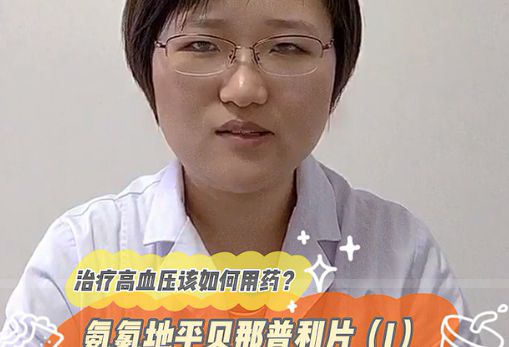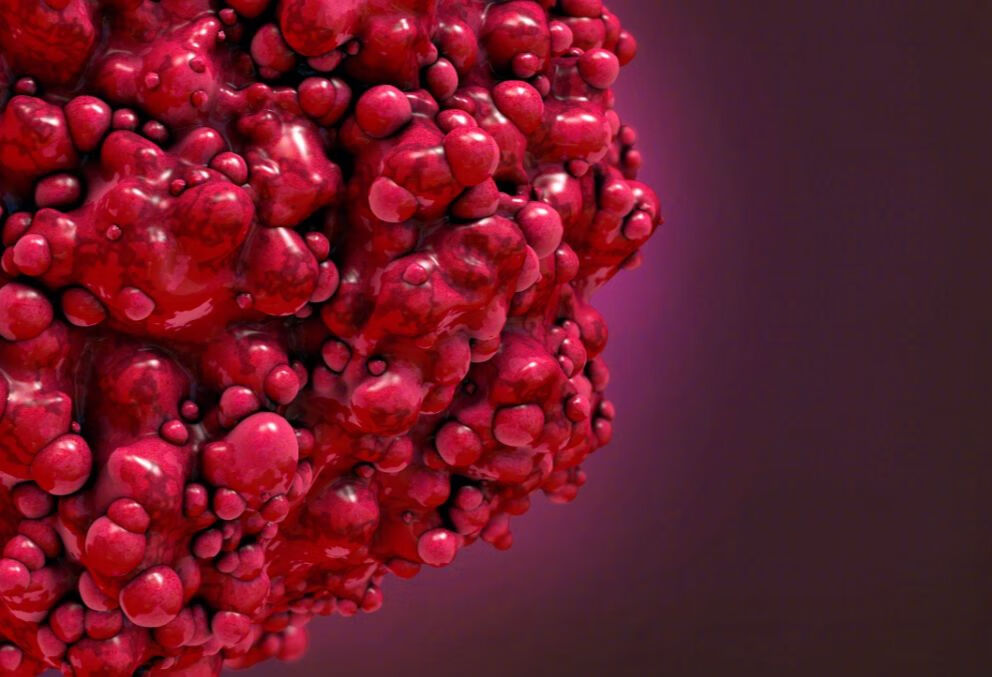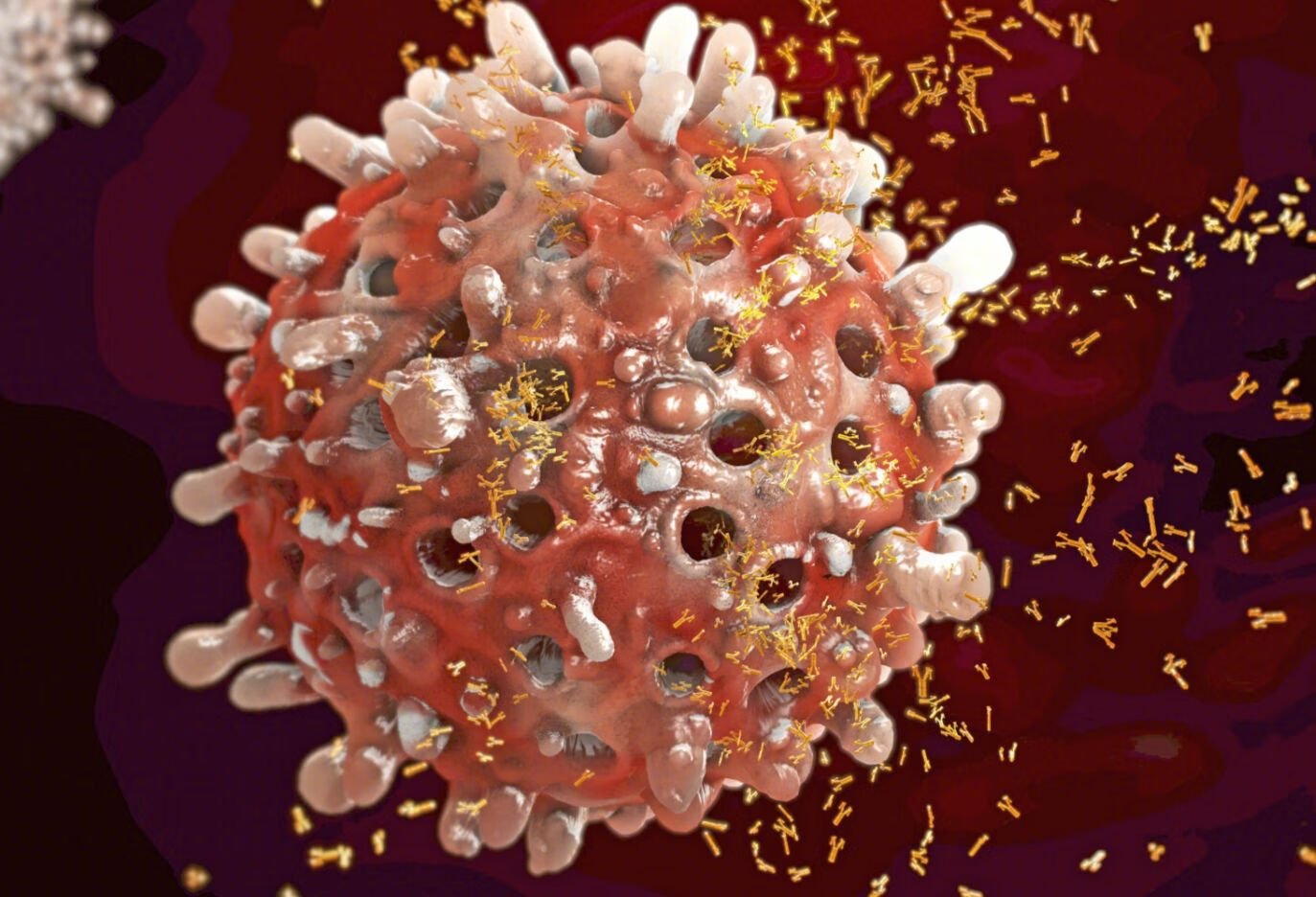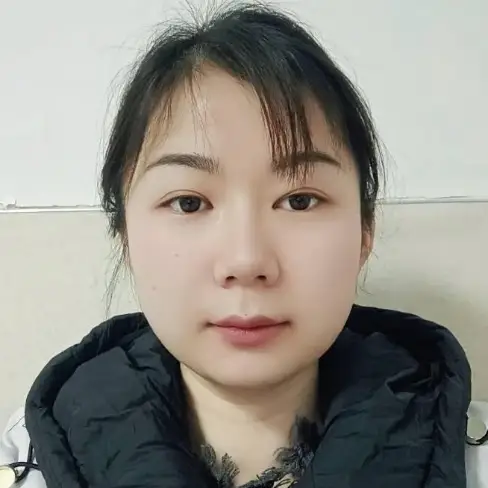以下内容来源于新英格兰医学杂志。
Presentation of Case
Dr. Carrie Chui (Neurology): A 79-year-old man was admitted to this hospital because of involuntary movements on the left side and transient unresponsiveness.
The patient had been in his usual state of health until 9 months before admission, when involuntary movements of the left shoulder and left side of the face developed. The movements were described by the patient as twitching, were not associated with a change in the level of consciousness, and resolved after 1 to 2 minutes. During the next 6 months, the patient had similar episodes approximately once per month, but the episodes increased in duration, lasting 5 to 6 minutes.
Three months before admission, the episodes of involuntary movements increased in frequency, and the patient was evaluated by his primary care physician. The physical examination was normal. Results of kidney-function tests were normal, as were blood levels of glucose and electrolytes, except for the sodium level, which was 129 mmol per liter (reference range, 135 to 145). There was a history of inappropriate antidiuretic hormone secretion, and the sodium level was similar to levels obtained during the past 4 years. Magnetic resonance imaging (MRI) of the head (
Figure 1A), performed before and after the administration of intravenous contrast material, revealed a focus of enhancement in the right middle frontal gyrus that was thought to be a small vascular anomaly. Electroencephalography (EEG), performed with the patient in awake and drowsy states, revealed rare, brief, focal slowing in the left temporal lobe during drowsiness; no epileptiform abnormalities were present.
Figure 1

MRI of the Head and CT Angiogram of the Head and Neck.
Two months before admission, the patient was evaluated in the epilepsy clinic affiliated with this hospital. He reported that the episodes of involuntary movements had increased in both frequency and duration, occurring once or twice per day and lasting approximately 10 minutes. Episodes began with tingling and numbness in the left leg that prompted the patient to voluntarily stomp the left foot to relieve the uncomfortable sensation. Then, the patient had involuntary movements that he described as an uncontrollable invisible force moving the left leg and arm, with hyperextension of the arm backward and pronation of the wrist. There was associated numbness in the distal portions of the left third, fourth, and fifth fingers and involuntary movement of the left cheek. No prodromal symptoms occurred. The patient had awareness during the episodes, and after the episodes, he felt fatigued but had a normal level of consciousness, without confusion. The examination in the epilepsy clinic was normal. A diagnosis of seizure disorder was considered, and treatment with levetiracetam was started.
Three weeks before admission, the patient was again evaluated in the epilepsy clinic. He reported that the episodes of involuntary movements still occurred on a daily basis but had decreased in duration and involved only the left leg, without abnormal movements of the arm or face. Dizziness, headache, and weakness had developed and were attributed to the use of levetiracetam. The patient’s family had recorded a video of one of the episodes of involuntary movements. After reviewing the video, the patient’s neurologist thought that the episodes were less likely to be caused by seizures and more consistent with choreoathetoid movements. Cross-tapering of medications — with the simultaneous administration of levetiracetam in decreasing doses and clobazam in increasing doses — was initiated, and the patient was referred to the movement disorders clinic affiliated with this hospital.
On the morning of admission, an episode of involuntary movements of the left leg and left shoulder occurred and persisted for 1 hour. Several hours after the symptoms abated, the patient’s wife found the patient to be unresponsive; he was sitting in a chair. Emergency medical services were called, and when they arrived, the patient was responsive. The fingerstick blood glucose level was 180 mg per deciliter (10.0 mmol per liter) and the blood pressure 110/80 mm Hg. The patient was transported to the emergency department of this hospital for further evaluation.
In the emergency department, the patient reported dysuria and increased urinary frequency. The patient’s daughter noted that he had been more anxious during the past 3 years and occasionally had trouble with memory. Other medical history included Barrett’s esophagus, benign prostatic hypertrophy, chronic hepatitis B virus infection, eczema, gastroesophageal reflux disease, hypertension, nonischemic cardiomyopathy, and osteoporosis. There was no history of head trauma or extended loss of consciousness. Medications included aspirin, atorvastatin, doxazosin, finasteride, omeprazole, metoprolol, sacubitril, and valsartan. There were no known drug allergies. The patient was a lifelong nonsmoker and drank alcohol rarely; he did not use illicit drugs. His mother had had gastric cancer, and his sister had had esophageal cancer; there was no family history of seizures.
On examination, the temporal temperature was 36.8°C, the blood pressure 152/97 mm Hg, the pulse 65 beats per minute, the respiratory rate 16 breaths per minute, and the oxygen saturation 96% while the patient was breathing ambient air. The body-mass index (the weight in kilograms divided by the square of the height in meters) was 21.7. The blood pressure decreased to 130/63 mm Hg with standing. The patient was alert and interactive. The lower jaw was held to the left, but the nasolabial folds and smile were symmetric with activation. There were nonrhythmic, nonstereotyped, writhing movements of the left arm. Tone was normal, and strength was assessed as 5 out of 5 in the arms and legs. Results of liver-function and kidney-function tests were normal, as were blood levels of glucose and electrolytes, except for the sodium level, which was 125 mmol per liter. The lactate level was 2.1 mmol per liter (19 mg per deciliter; reference range, 0.5 to 2.0 mmol per liter [5 to 18 mg per deciliter]). The urinalysis was normal. Intravenous fluids were administered. Imaging studies were obtained.
Dr. Rajiv Gupta: Computed tomographic (CT) angiography of the head and neck (
Figure 1B) revealed extensively calcified plaque with severe stenosis of the distal right common carotid artery (CCA), extending into the proximal right internal carotid artery (ICA), as well as stenosis of the right and left paraclinoid ICAs and the left vertebral artery at its origin. There was no vascular abnormality on the CT angiogram that corresponded to the abnormality in the right middle frontal gyrus seen on the previous MRI.
Dr. Chui: The patient was admitted to the hospital. On the second hospital day, the sodium level had increased to 130 mmol per liter, and the lactate level was normal. Additional imaging studies were obtained.
Dr. Gupta: MRI of the head showed no evidence of acute infarction. The focus of enhancement in the right frontal lobe that had been noted previously was not seen on the current MRI.
Dr. Chui: Blood levels of thyrotropin, cobalamin, and glycated hemoglobin and results of coagulation tests were normal. Screening tests for Lyme disease, tuberculosis, and syphilis were negative, as were tests for antibodies to cardiolipin and β2-glycoprotein. A test for antinuclear antibodies was positive, at a titer of 1:160 in a homogeneous pattern. During a physical therapy session, the patient had abnormal movements of the left leg, left arm, and left side of the face. The abnormal movements diminished when the patient used distraction techniques, such as thigh tapping, finger snapping, and walking while holding a glass of water.
The transient unresponsiveness that led to the patient’s admission was attributed to a combination of sedation from clobazam and hypovolemia. Treatment with clobazam was stopped, and hydration was encouraged. A diagnosis of functional neurologic disorder was considered; outpatient physical therapy with continued use of distraction techniques was recommended. The patient was discharged home on the third hospital day.
Episodes of involuntary movements continued to occur on a daily basis at home. Two weeks after discharge, when the patient was doing exercises while sitting in a chair and having a conversation with his wife, he suddenly stopped talking. She found him slumped in the chair with his eyes closed, no longer exercising. When she asked him questions, he repeatedly said “yes.” Emergency medical services were called, and when they arrived, the patient was alert, diaphoretic, and nonverbal. He had a facial droop on the left side and a right gaze preference. The fingerstick blood glucose level was 130 mg per deciliter (7.2 mmol per liter) and the blood pressure 120/60 mm Hg. The patient was transported to the emergency department of this hospital for further evaluation.
In the emergency department, the temporal temperature was 36.6°C, the blood pressure 143/63 mm Hg, the pulse 66 beats per minute, the respiratory rate 18 breaths per minute, and the oxygen saturation 98% while the patient was breathing ambient air. He was alert and interactive. There was a facial droop on the left side. There was no effort against gravity in the left arm. The patient was able to lift the left leg off the bed for 1 to 2 seconds. He had a right gaze deviation that could not be overcome and mild dysarthria. The remainder of the examination was normal. A diagnosis of stroke was considered, and emergency CT angiography was performed.
Dr. Gupta: CT angiography showed no evidence of acute territorial infarction and no changes in cerebrovascular disease.
Dr. Chui: On repeat physical examination performed after CT angiography, the gaze deviation and dysarthria had resolved, and strength was normal. Mild facial paralysis was present.
A diagnosis was made.
Differential Diagnosis
Dr. Albert Y. Hung: This 79-year-old man initially presented with involuntary movements of the left shoulder and face without associated loss of consciousness. Diagnosis of an unusual movement disorder, especially one that is present episodically, can be challenging. Videos brought in by the patient can be very useful.
1 Most movement disorders result from abnormal functioning of extrapyramidal circuits involving the basal ganglia, rather than a specific neuroanatomical lesion, and the first step toward diagnosis is to identify the type of abnormal movements.
2
Four salient aspects of this patient’s involuntary movements can help in characterizing the movement disorder before generating a differential diagnosis. First, the movements were paroxysmal, lasting for short periods of time with resolution between episodes. Second, the movements were nonstereotyped, appearing randomly and variably. Third, the movements were restricted to the left side of his body throughout the course, localizing the disease process to the right cerebral hemisphere. Finally, the symptoms were progressive, increasing in both duration and frequency.
Movement Disorders
This patient had abnormal involuntary movements, symptoms indicative of a hyperkinetic movement disorder. Tremor, the most common hyperkinetic disorder, is unlikely because the patient did not have rhythmic movements. Dystonia is also unlikely, because he did not have sustained muscle contractions that were causing twisting or abnormal postures of the legs, arms, head, neck, or face. Although the patient initially described the movements as twitching, his later descriptions are not suggestive of myoclonus or tics, which manifest as sudden, rapid, recurrent movements.
This patient’s neurologist described the involuntary movements as “choreoathetoid” after reviewing a video of an episode. Chorea, athetosis, and ballism make up a spectrum of involuntary movements that often occur in combination.
Chorea refers to involuntary movements that are “dancelike” — irregular, random, unintended, and flowing from one body part to another. When these movements are slow and writhing (with a lower amplitude) and involve the distal limbs, the term athetosis is used. The presence of both chorea and athetosis in the same patient is referred to as choreoathetosis. When the movements are fast and flinging (with a higher amplitude) and involve the proximal limbs, the term ballism is used. Although the description of this patient’s movements was not clearly suggestive of ballism, hemichorea and hemiballismus often occur together.
The term dyskinesia can refer to any abnormal movements and is often used to describe hyperkinetic disorders that are induced by specific drugs, such as tardive dyskinesia induced by dopamine antagonists or dyskinesia induced by levodopa in patients with Parkinson’s disease. Often, dyskinesia manifests as chorea or choreoathetoid movements, but chorea and dyskinesia are not synonymous. This patient appears to have involuntary dyskinesia with choreoathetosis as the primary phenomenology. Before constructing a differential diagnosis for dyskinesia in this patient, I will consider two conditions that mimic dyskinesia: seizures and functional movement disorder.
Seizures
Various movement disorders may be mistaken for seizures, although these movement disorders are not associated with EEG abnormalities during the episode. Patients with some forms of epilepsy may present with abnormal movements without other features that are typically associated with seizures, such as aura, change in responsiveness, incontinence, or a postictal state.
3,4 Seizures were initially suspected in this patient, and he was referred to the epilepsy clinic. Recurrent focal seizures were probably suspected because of the transient nature of the episodes. Initial MRI had shown a small abnormality in the right middle frontal gyrus, but this finding was not seen on follow-up imaging, which makes it unlikely to be related to the overall presentation. Baseline EEG had shown only brief left temporal slowing, without epileptiform abnormalities. The EEG was an interictal study, so the findings do not rule out seizures. However, the slowing was ipsilateral to the abnormal movements, so it is unlikely to be related to the episodes. In addition, the patient’s involuntary movements were nonstereotyped and nonrhythmic, which makes his presentation unlikely to be due to a seizure disorder.
Functional Movement Disorder
Because this patient’s movements diminished with the use of distraction techniques, a diagnosis of functional movement disorder was considered.
Most cases of functional movement disorder begin abruptly after a trigger, such as a mild physical injury or illness; a psychological stressor can be present but is not required for diagnosis. Symptoms are typically most severe around the time of onset and may wax and wane over time. Although distractibility is a finding associated with functional disorders, abnormal movements that occur with nonfunctional syndromes can sometimes be suppressed by action or incorporated into voluntary movements in a manner that may appear distractible. Several clinical features in this patient make a diagnosis of functional disorder unlikely. Functional movement disorder is more common in women than in men, and the average age at onset is 40 years. 5 In addition, tremor is the most common clinical phenotype seen in patients with functional movement disorder; chorea or choreoathetosis, which was seen in this patient, is very unusual in patients with functional movement disorder. Overall, functional movement disorder is unlikely to explain this patient’s presentation.
Dyskinesia
Primary paroxysmal dyskinesia refers to a group of heterogeneous syndromes characterized by recurrent involuntary movements that occur episodically and abruptly, without loss of consciousness.
6 These disorders usually begin in childhood or young adulthood. Both the age of this patient and the described phenomenology make a diagnosis of primary paroxysmal dyskinesia unlikely.
The differential diagnosis in this case is therefore focused on causes of secondary dyskinesia, of which there are many.
7 MRI ruled out the presence of a mass lesion suggestive of cancer. The patient had no history of acute illness suggestive of a viral or other infectious encephalitis, and there was no history of trauma or exposure to drugs or other toxins. Although his daughter mentioned trouble with memory, there was no compelling history suggestive of a neurodegenerative disease.
A common metabolic cause of secondary dyskinesia is diabetic striatopathy, a syndrome involving the acute-to-subacute onset of chorea and ballism in the context of hyperglycemia. 8 This syndrome can occur as the initial manifestation of type 2 diabetes mellitus or as a complication of poorly controlled diabetes. Diabetic striatopathy is more likely to develop in women than in men, and the average age at onset is 70 years. Most patients present with hemichorea and hemiballismus, rather than bilateral symptoms. CT shows hyperdensity, and T1-weighted MRI shows hyperintensity, in the contralateral basal ganglia. However, this patient had no history of diabetes and had a normal blood glycated hemoglobin level, features that rule out a diagnosis of diabetic striatopathy.
Choreiform movements can also be a manifestation of autoimmune conditions. 9 This patient’s initial presentation with unilateral shoulder and face movements would have suggested the possibility of faciobrachial dystonic seizures associated with anti–leucine-rich, glioma-inactivated 1 (anti-LGI1) encephalitis. 10 This condition is often associated with hyponatremia, which was present in this patient. However, as the case evolved, leg involvement and sensory changes developed that would be atypical for anti-LGI1 encephalitis.
One key clue in this case is that the patient did not have an isolated movement disorder. In addition to motor symptoms, he had a variety of sensory symptoms involving both the left arm and the left leg. His first hospital admission was precipitated by an episode of unresponsiveness. The clinical event that led to his second presentation to the emergency department was distinctly different: an acute onset of speech difficulty accompanied by left hemiparesis and right gaze deviation that was worrisome for an acute right middle cerebral artery (MCA) syndrome. The symptoms resolved without intervention, which indicates that he may have had an acute transient ischemic attack (TIA). The most relevant imaging finding was severe cerebrovascular disease, including severe stenosis of the distal right CCA and proximal right ICA. Could this patient’s movement disorder be explained by a vascular lesion?
Limb-Shaking TIAs
Limb-shaking TIAs were first described by C. Miller Fisher in 1962.
11 In most case reports, these episodes are associated with high-grade stenosis of the ICA, which was seen in this patient.
12,13 The mechanism is thought to be cerebral hypoperfusion, and changes in posture or head position that decrease cerebral blood flow can precipitate these episodes. In this patient, the first episode of unresponsiveness that led to hospital admission occurred when he was sitting. He then had an acute episode involving right gaze preference that was provoked by exercise and was very suggestive of a TIA in the right MCA territory. These findings are highly suggestive of a diagnosis of limb-shaking TIAs, and I would refer this patient for emergency carotid endarterectomy.
Clinical Impression and Initial Management
Dr. Scott B. Silverman: When I evaluated this patient, his transient right gaze preference and left hemiparesis were consistent with a right MCA syndrome due to a TIA from symptomatic severe stenosis of the right ICA. The mechanism of this event was either artery-to-artery embolism or hypoperfusion. His previous, recurrent episodes of transient choreoathetosis on the left side that had occurred mainly while he was sitting, standing, or exercising were consistent with limb-shaking TIAs from hypoperfusion or low flow.
The pathogenesis of a low-flow state related to severe carotid stenosis resulting in limb-shaking TIAs is described in a small case series.
14 In six out of eight patients, the transient, stereotyped, involuntary movements were eliminated with carotid artery revascularization. Positional cerebral ischemia in patients without orthostatic hypotension has been described.
15
Treatment with atorvastatin was continued, the dose of aspirin was increased to 325 mg per day, and an intravenous heparin infusion was started. The strategy of permissive hypertension was used, with high blood pressure allowed to a maximum systolic blood pressure of 180 mm Hg. The patient was admitted to the stroke service, and carotid artery duplex ultrasonography was performed.
Dr. Gupta: Doppler ultrasonography of the carotid arteries (
Figure 2) revealed markedly elevated Doppler flow velocities within the proximal right ICA. There was a parvus et tardus waveform in the distal right ICA, a finding indicative of low flow related to the more proximal high-grade stenosis. The Doppler waveform contours had poststenotic turbulence.
Figure 2

Doppler Ultrasound Image.
Dr. Silverman: The vascular surgery service was consulted, and the patient underwent right carotid endarterectomy.
Clinical Diagnosis
Limb-shaking transient ischemic attacks.
Dr. Albert Y. Hung’s Diagnosis
Limb-shaking transient ischemic attacks due to severe carotid stenosis, with secondary paroxysmal dyskinesia.
Pathological Discussion
Dr. Caroline F. Hilburn: The endarterectomy specimen included the carotid bifurcation and was notable for firm arterial walls, a finding consistent with calcification. On gross examination (
Figure 3A), a large plaque was centered at the carotid bifurcation and protruded into the lumen, resulting in a maximal luminal stenosis of 80%. The plaque had an irregular and focally friable surface. On microscopic examination (
Figure 3B), the plaque was characterized by extensive calcification. Some regions of the plaque had a smooth, healed fibrous cap, whereas other regions had an irregular surface suggestive of ulceration, which indicated potential sites of plaque rupture. Multiple smaller calcified plaques were present, affecting both branches of the artery.
Figure 3

Endarterectomy Specimen.
Pathological Diagnosis
Complex atherosclerotic plaque with portions of attached media.
Additional Management
Dr. Silverman: After the procedure, the patient had an uneventful recovery and was discharged home on the fifth hospital day. He was seen 1 month after discharge in the stroke prevention clinic. There had been no further episodes of involuntary movements or choreoathetosis and no stroke or TIA. The patient continues to take aspirin, atorvastatin, and antihypertensive medications.
Final Diagnosis
Limb-shaking transient ischemic attacks.







 CDE官网截图
CDE官网截图


















